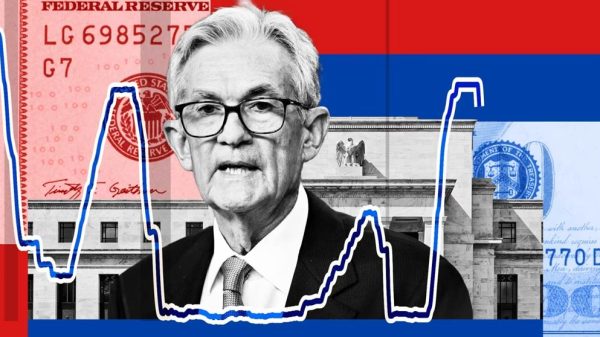U.S. Treasury yields traded relatively flat early Tuesday as investors digested the implications of a newly announced China-U.S. trade deal while bracing for April inflation data set to release later in the day.
The yield on the benchmark 10-year Treasury note edged slightly higher, gaining less than a basis point to 4.457% as of 3:57 a.m. ET. Meanwhile, the 2-year Treasury yield fell over a basis point to 3.983%. It’s worth noting that yields and prices move inversely, and one basis point equals 0.01%.
China-U.S. Trade Agreement Sparks Mixed Reactions
On Monday, the U.S. and China unveiled a trade agreement aimed at reducing tariffs and fostering economic cooperation. As part of the deal, both countries agreed to suspend the majority of existing tariffs on each other’s goods for 90 days. Additionally, “reciprocal” tariffs were slashed from a steep 125% to just 10%.
While the announcement brought some relief to markets, experts cautioned that the broader economic outlook remains uncertain. Michael Brown, senior research strategist at Pepperstone, described the agreement as a reflection of the “volatile and chaotic nature” of U.S. policymaking in recent years, which has, in his view, diminished the credibility of American institutions.
Adding to the skepticism, Vasu Menon, managing director of investment strategy at OCBC, raised concerns about the potential long-term effects of former President Donald Trump’s 10% universal tariffs. Menon also pointed out that Trump’s earlier reciprocal tariffs, initially introduced in April but paused shortly after, have added to the uncertainty surrounding U.S.-China trade relations.
“While we don’t foresee a recession at this stage, a significant slowdown in the U.S. economy seems almost certain,” Menon wrote in a note to investors.
Focus Shifts to Inflation Data
As investors assess the trade deal’s impact, attention is also turning to the latest U.S. inflation figures. The Consumer Price Index (CPI) for April is expected to show an annual increase of 2.4%, according to estimates from Dow Jones. Core inflation, which excludes volatile food and energy prices, is projected to remain steady at 2.8% year-on-year.
The inflation data will play a critical role in shaping market sentiment, as it could influence the Federal Reserve’s next move on interest rates. The Fed has been closely monitoring inflation trends as it navigates a delicate balancing act between controlling price increases and supporting economic growth.
Market Implications
Despite the optimism surrounding the temporary tariff reductions, the broader market remains cautious. Investors are wary of the potential for further policy reversals or heightened trade tensions as the 90-day suspension period unfolds. Meanwhile, inflation data could provide critical clues about the health of the economy and the trajectory of interest rates in the coming months.
For now, Treasury yields remain steady, reflecting a wait-and-see approach as markets grapple with a mix of trade policy shifts and inflationary pressures. With uncertainty still looming over the U.S. economic outlook, all eyes will be on the Federal Reserve’s next steps and the broader implications of the China-U.S. trade deal.











